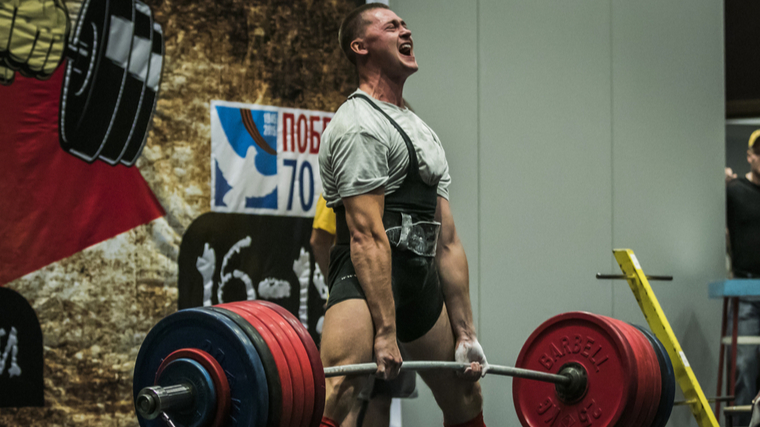You probably don’t have all morning (or afternoon) to spend in the weight room, out on the track, or in the yoga studio — even if there’s nowhere else you’d rather be.
Balancing your workouts with your lifestyle, career, or family is far easier on paper than it is in practice. Alternatively, if you’re thinking about getting started with exercise, knowing how many hours you’ll need to spend in the gym to get where you want to go is crucial.

The duration of your workout, unsurprisingly, varies. Moreover, it will change with time, just as your physique, strength, or mobility do. Here’s a general breakdown of workout duration, plus some helpful tips for saving time and making those sweaty minutes count.
Workout Duration Explained
- Workout Duration for Bodybuilding
- Workout Duration for Strength Athletes
- Workout Duration for Beginners
- Factors That Influence Workout Duration
- How To Save Time on Your Workouts
Editor’s Note: The content on BarBend is meant to be informative in nature, but it should not be taken as medical advice. When starting a new training regimen and/or diet, it is always a good idea to consult with a trusted medical professional. We are not a medical resource. The opinions and articles on this site are not intended for use as diagnosis, prevention, and/or treatment of health problems. They are not substitutes for consulting a qualified medical professional.
Workout Duration for Bodybuilding
Bodybuilding — which is both a formalized physique-based sport as well as a general descriptor of exercising specifically for muscle gain — is a years-long endeavor.
What begins as a few humble sets of bench pressing or biceps curls will likely evolve into many hours per week devoted to your craft, both in the weight room and especially in the kitchen.
How Long Should a Bodybuilding Workout Last?
Many physique-focused workout plans are broken down into what are known as body part “splits,” wherein you hit a few specific muscles on a given day in the gym.
While some days in your split may take longer than others (leg and back-focused workouts come to mind, since those large muscles can take quite a beating), one of the many benefits of splitting up your bodybuilding routine is that doing so breaks down the task of growing your entire body into manageable parts.

You should expect a bodybuilding workout to take between 60 and 90 minutes on average. However, there are a litany of factors that can dial this duration up, such as experience level, the muscles you’re working, or how many exercises you perform.
Workout Duration for Strength Athletes
Getting stronger is a noble pursuit in the gym. There’s something fulfilling and empowering about assessing your fitness level through simple, trackable numbers. If you’re lifting five more pounds this week than you were the weak prior, you’re better than you were — period.
That said, strength athletes like powerlifters, weightlifters, strongmen, and even CrossFit practitioners, adhere to different principles in the gym. They also don’t train the same movements, for the most part.
How Long Should a Strength Workout Last?
There’s a tremendous amount of variance in the duration of a strength athlete’s workout, depending on which sport they practice and how far along their journey they might be.
For example, if you enjoy Olympic lifting, you’re really only focused on two exercises (the snatch and clean & jerk). That may be a lighter load than a powerlifter (who trains the bench press, squat, and deadlift) on paper, but weightlifting technique is generally considered more complex and harder to learn than the powerlifts, which can add to your training duration.

[Read More: The Most Effective Workout Splits, Created by Our Experts]
Most strength-sport training sessions will take between 90 minutes and 2 hours to complete. Less-experienced athletes may not need as much time to train, since their weights won’t be as heavy.
Conversely, a high-level strength athlete usually spends a great deal of time just warming up to the ultra-heavy loads they have to lift on a given day.
CrossFit or functional athletes spend comparable amounts of time preparing for the various challenges they encounter on a session-to-session basis.
Workout Duration for Beginners
Fitness is a long and winding road, but every journey begins with one small step. If you’re brand new to exercise, you needn’t worry about making the weight room into a second job.
Reasonable progression is one of the core tenets of physical training. You start small and build over time. This holds true for cardio, weight training, and includes workout duration as well.
How Long Should a Beginner Workout Last?
If you’re excited to get started in the gym but are worried you may not have the time in your schedule to accommodate an exercise routine, fret not. Your first few steps won’t take nearly as much time out of your week as you’d think.
A beginning gymgoer has a low tolerance to physical stimuli. Put simply, this means that a small amount of training will have a great impact on your body, since you’re not used to it.
As such, fresh-faced athletes don’t spend nearly as much time in the weight room as full-time powerlifters or competitive bodybuilders might. Beginner workouts generally only require 30 to 60 minutes in the gym each day, depending on what kind of physical activity you’re getting into.

A large portion of your time in the gym might be dedicated to practicing new movements, looking up the correct stretches or drills for your body, or asking a friendly patron for help. There’s no reason to assume you have to go hard for an entire hour in your first week.
Factors That Influence Workout Duration
No two workouts will take the exact same amount of time. How you design and perform your exercise routine is bound to affect the number of hours per week you should expect to be in the gym.
Here are a few of the biggest factors that influence the duration of your training sessions.
Experience Level
The principle of progressive overload is the universal constant of working out. The fitter you are (whether you measure that by how much muscle you have, how strong you are, or how fast you can run is up to you), the more training you’ll need to continue making progress.
After all, it simply takes longer to run five miles than it does to run one. If you deadlift 500 pounds, it’ll take you longer to work up to that number on leg day.
As your performance improves over time, you should expect the duration of your training sessions to gradually increase as well.
That said, don’t expect your one-hour workout to morph into a three-hour behemoth every time you set a new personal record.
Goals
The goals you set for yourself shape and determine your actions. If you want to get stronger, you have to train for strength, and deal with all that comes along with it.
If you’re a bodybuilder who wants to develop a muscular, proportional physique, you’ll have to train every single muscle in your body on a regular basis (even the tiny ones you might be overlooking). That’s hours added to your training week; no way around it.

[Read More: Powerbuilding Workout Routine, With Tips from a CPT]
However, if you’re in the gym just so you can feel a bit better doing house chores or playing with your kids on the weekends, you probably don’t need to make exercise a two-hour affair every day.
Whatever goal you set for yourself, be willing to accept the necessary behaviors that go along with it. There’s no sense in wanting to be a competitive weightlifter if you can’t stomach long, technically-intensive training sessions.
Exercise Order
Workouts are as much a physical task as they are a logistical and organizational challenge, especially if you have high aspirations or want to get good at multiple types of exercise at once.
You can tack on time (or trim it down) to your workouts by monitoring how you actually perform them.
For example, if your training plan calls for three dumbbell-based movements per day, you’d save more time by hitting them up back-to-back-to-back rather than doing one at the start, one in the middle, and one at the end.
Clustering your exercises by technical similarity, muscles worked, or equipment used may help your sessions feel more efficient and less like a slog to trudge through.
Social Atmosphere
The gym doesn’t have to be a fortress of solitude (though it’s perfectly okay if you use the weight room as dedicated you time). For some, training is a communal activity, and there’s absolutely nothing wrong with that.
Note, though, if you build relationships with your comrades in iron, maintaining those bonds will likely amount to longer sessions.

Everything from making small talk with the front desk attendee to offering a helping hand to a nearby patron when they’re going for a new bench press record can add up, but healthy social interaction is something you can’t put a price on.
Weigh these factors for yourself and decide if you want the gym to be a place of physical and social betterment, or if you’d just rather do your thing privately and get on with your day. Neither is wrong; it’s all about finding what suits you.
How To Save Time on Your Workouts
You might be past the point of worrying whether or not you can fit an exercise regime into your schedule. That said, there’s no harm in polishing your performance on the calendar as well as in the weight room.
Here are a few helpful tips for making sure your workouts are expedient and effective all at once.
Have a Pre-Written Plan
One of the best ways to ensure you don’t wander aimlessly around the gym is to adhere to a structured, pre-written workout routine.
Putting your training “on rails” provides you with a straightforward task list for the day, so you’re never left wondering what movement (or muscle) you should hit first, how much weight you should use, or what the best ways to warm up or cool down are.

Structured, or periodized, training becomes increasingly important the longer your gym career extends. All high-level athletes, no matter their sport, adhere to some form of periodization to keep getting better. Don’t leave your gains to chance or risk them on a whim.
Group Your Movements
Your training sessions shouldn’t feel like a scavenger hunt. If you find yourself frenetically hopping back and forth across the gym during your session, you may not be executing things in an efficient manner.
For example, say you’re hitting up a back-and-biceps workout for muscle growth. If you were to alternate between movements for each of those muscles, you might spend an annoying amount of time wandering back and forth between the dumbbell rack and the cable pulley.
Grouping your movements in accordance with intensity, equipment, or intent can help expedite the process and ensure the gain train rolls smoothly.
Know the Layout of Your Gym
Working out in unfamiliar territory can dampen your motivation and slow down your cadence. This isn’t necessarily a concern for dedicated fitness enthusiasts who are comfortable in their gyms after months there, but this could make a serious difference in your first few sessions at a new facility.
It’s worth it to take a few minutes at some point early on in your fitness journey to assess the organizational layout of your gym. Learn and memorize where the dumbbells are, how many benches you have access to, or where the exercise mats are stored.
The staff at your facility are likely to be perfectly willing to show you around the floor and highlight all the points of interest.
Time Your Rest
The type of training you’re into will greatly affect how long you need to recover from your sets, sprints, or circuits.
However, it’s easy to let time slip by if you don’t track your rest periods, especially if you like to be a bit social in the weight room. To ensure you keep a chipper pace, you can time your rest periods with a stopwatch or your smartphone.

Generally speaking, strength-intensive or barbell exercises will take several minutes to recover from, especially if you’re working near your strength ceiling.
Endurance, cardiovascular, and circuit work won’t typically need more than a minute or so to bounce back from, but this does vary depending on how hard you go.
Time Is Fleeting
In a perfect world, you might want to rise and grind in the gym for as long as the sun shines in the sky. Alternatively, exercise might be a necessary evil in your very hectic schedule.
Either way, you should know what you’re getting into when you lace up your trainers, cleats, or lifting shoes, both in terms of hours spent and sweat shed.
Knowing exactly how long your workouts take — and how to adjust that time investment if needed — might just help you get where you’re going a little faster.
Featured Image: wavebreakmedia / Shutterstock